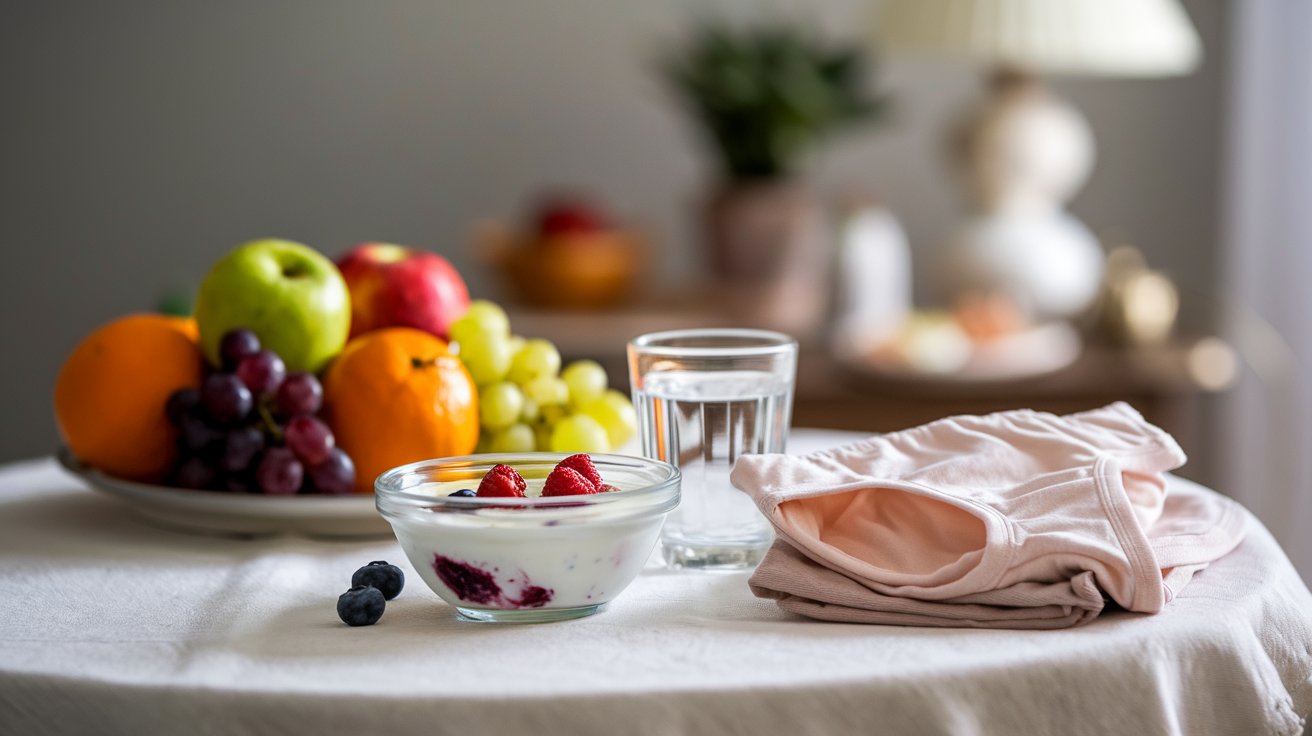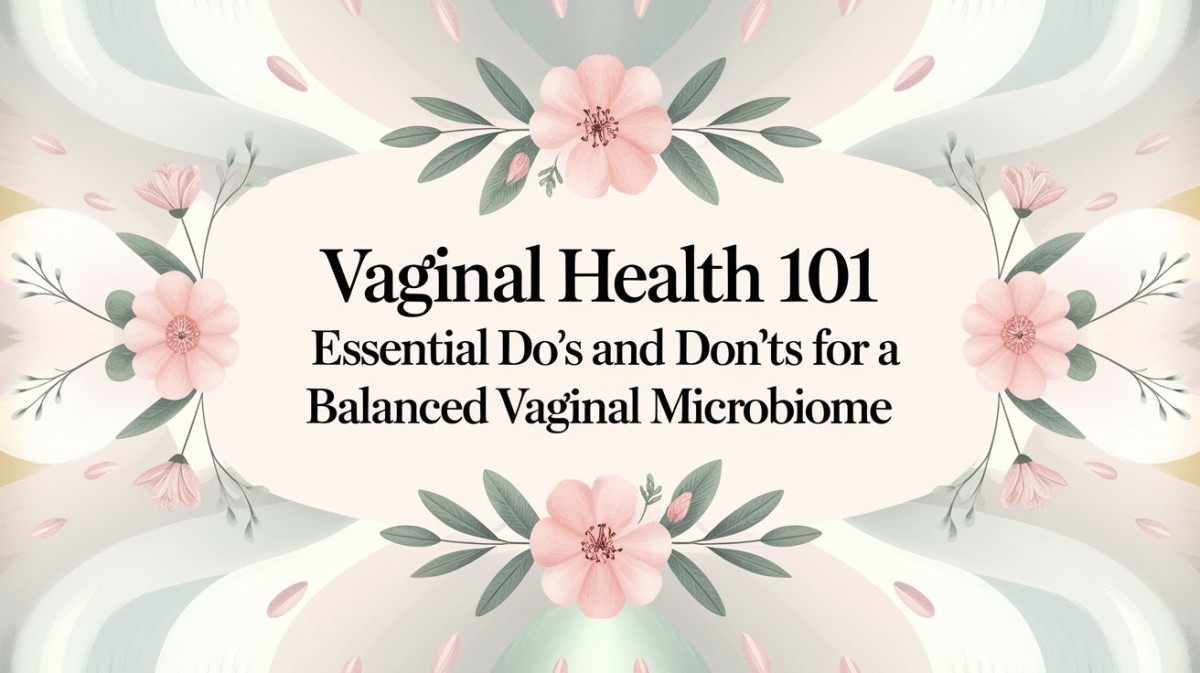To the issues of women’s health the role of the vaginal microbiome is critical but quite underestimated. This biofilm of bacteria, mostly Lactobacilli, is essential for the control of vaginal acidity and infections and general health. But some practices, some products, and even some types of food interfere with this balance. On this blog post, we will discuss the pragmatic approach to achieve better vaginal health and then lay down the list of dos and don’ts.
Why the Vaginal Microbiome Matters

The vaginal flora represents a complex and constantly changing eco-system and the state of microbiological balance differs dependently on menstruation, sexual activity, hormonal changes and diet. In an optimal and healthy state, the LABs are known to be in a ratio of 10:1 with the total bacterial count, and the species majorly present is Lactobacilli that help to produce lactic acid that favors slightly acidic environment, pH, of 3.8-4.5. This creates an unfavorable environment for bacterial and yeasts that causes bacterial vaginosis (BV) and other infections such as yeast infections.
The Do’s for a Healthy Vaginal Microbiome

1. Do Eat a Balanced Diet Rich in Probiotics and Prebiotics
As you have already learned, your diet affects vaginal microbiota. Yogurt, kefir, sauerkraut, kimchi – these as well as other foods containing probiotics bring the good bacteria into your system. Probiotics are the good bacteria that thrive within the gut, and these are brought in by consuming fruits, vegetables, Whole grain, and other foods containing fiber also help the body in enhancing the gut’s microbiome by feeding these probiotics.
2. Do Hydrate Regularly
Body hydration is important for every organ including the female reproductive organs, thus it should be taken seriously. Lubrication in the vaginal area is important in order to minimize contacts that may causing irritation and proper hydration helps to balance the environment.
3. Do Wear Breathable, Cotton Underwear
The fabric used in the manufacture of cotton is excellent in absorbing sweat and other fluids hence preventing congregation of fluids that may cause bacterial or yeast infections. For this reason, one should wear free clothes as much as possible.
4. Does Good Hygiene During Menses
For sanitary reasons, it is appropriate that tampons or pads be changed often to prevent bacteria build-up and causes of smell. If you still choose menstrual cups, make sure to clean them before and after each cycle use only.
5. Do Urinate After Intercourse
Urination after sex assists in washing out bacterial pathogens that may have gone into the urethra and cause the urinary tract infections (UTI). Warm water washing after the cleansing part is also advantageous but do not use sharp soaps.
6. Do Consider Probiotic Supplements if Necessary
These probiotics supplements which are intended for vaginal purpose can help in growing Lactobacillus bacteria present in the body. If you have a tendency to get sick easily, speak to a healthcare provider before taking any new supplement.
7. Do Use Gentle, Unfragranced Soaps (if at all)
Although the vagina clean itself, mild soaps without fragrances should be used to clean the vulva if necessary. It is recommended to stop using douches and scented products because they can disrupt the natural PH base.
The Don’ts for a Healthy Vaginal Microbiome

1. Do not use the douche or any scented products.
It is unhygienic since the vagina has natural ways of cleaning itself, and douching them cause the method to be interrupted. Scented products such as; scented tampons, wipes or soaps can cause infections to the vaginal walls due to the chemicals added to them which changes the PH and the composition of the microbiome.
2. Don’t Wear Tight, Non-Breathable Clothing for Extended Periods
Wearing clothes that are tight and clothes that are made from synthetic materials lead to accumulation of sweat which is an excellent fairy ground for the development of bacteria or yeast. Reduce the wearing of nylon, lace and spandex and eschew skinny jeans for a long while.
3. Don’t Over-Cleanse or Use Harsh Soaps
Washing too often can remove the usual protecting bacteria that exist on the skin naturally. However, warm water should suffice if cleaning the outer part of the body; for extreme cases such as dirt on the skin, a mild and non-profumed soap shall be used but not on the inside.
4. Don’t Ignore Persistent Symptoms
Abnormal discharge or odor, or having an urge to scratch could be an indication that a woman is off balance. The common symptoms that should not lead to use of over the counter medications include, bacterial vaginosis, yeast infection, or sexually transmitted disease infection.
5. Don’t Delay Replacing Feminine Hygiene Products
It is advisable to use and dispose of sanpro products such as tampons, pads or menstrual cups in the shortest time possible to minimize on introducing bacteria which causes toxic shock syndrome (TSS) or infections. Tampons should be replaced every 4 to 6 hours; and pads should be changed every 4 to 8 hours.
6. Don’t Share Towels or Underwear
The spread of bacteria and yeast is easily achievable if people in the house are sharing personal belongings such as towels or underwear. Shower with your own exclusive clean and dry towels; do not ever borrow another person’s underclothes.
7. Don’t Consume Excessive Sugary Foods
Sweet foods tend to support the growth of yeasts with results to imbalances as well as infections. Limiting sugars is advisable, especially if you are an opponent of recurrent Candida vaginal infections.
Lifestyle Tips to Support Vaginal Health

❖ Exercise Regularly: Exercise increases blood flow, which is good for the skin and healthy vaginal environment or microbiome. Therefore, you could opt for a Kegel exercise to build up the pelvic floor muscles.
❖ Sleep Well: Which undisturbed vaginal microbial profile is important for a healthy immune, self-cleaning, and suggestion to get 7-9 hours of sleep can also help build one’s immune.
❖ Manage Stress: Excessive stress makes a person’s immune system more vulnerable, which means that bacteria is much harder for the body to fight off. Try and avoid stress as much as possible by having practice in exercises such as mindfulness, yoga or deep breathing.
❖ Limit Antibiotic Use: Some antibiotics wash away good bacteria in the human body and that of the vaginal microbiome included. Always, avoid using antibiotics without consulting your doctor and only use them when the doctor recommends you too.
❖ Consider pH-Balanced Lubricants: If you decide to use some lubes, always use the water-based ones because other ones cause alterations of the vaginal pH and promote bacterial imbalance.
When to See a Gynecologist
If you have constant multiple infections, inflammation, discharge or pain contact a Gynecologist. Some of these symptoms may suggest health problems that need medical attention. Annual check–up and pelvic examination and / or undergoing Pap smear tests as advised are crucial in checking on the health status of the vagina.
Key Takeaways for a Healthy Vaginal Microbiome
Healthy vaginal environment therefore entails cleanliness, appreciate changes in lifestyles and signals in the body. By using these do’s and don’ts, you create a context that healthy bacteria are welcomed and infection that may lead to discomfort are kept at bay. A good state of the vaginal microbiome is essential to your total health thus, do not fail to attend to it, and seek professional advice from your doctor where necessary.
In conclusion, treat vaginal health like it is not as complicated as some people make it to be. Most of the time, going back to the root causes of skin problems – for example, using loose and light garments, eating right, not using abrasive soaps and chemicals – may go a long way. Accept these minute differences, pay attention to the signs, and do not neglect scheduled appointments to the gynecologist for a healthy woman all the years.
